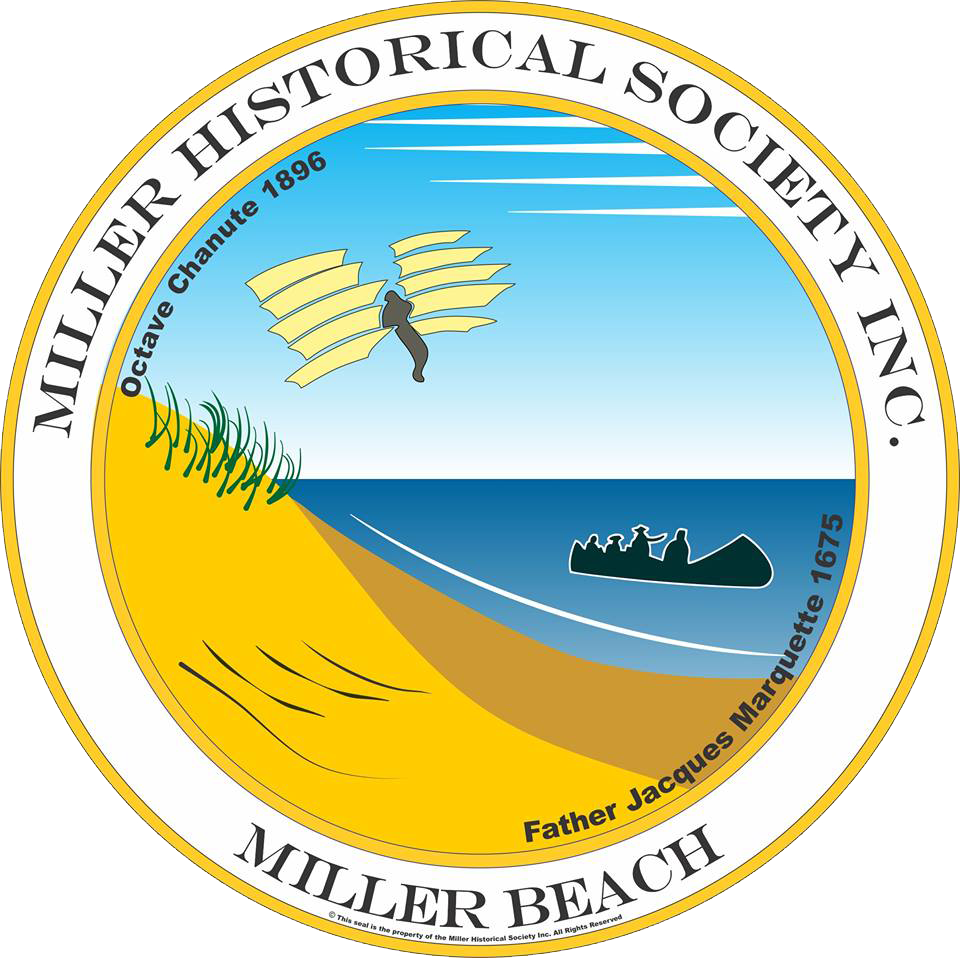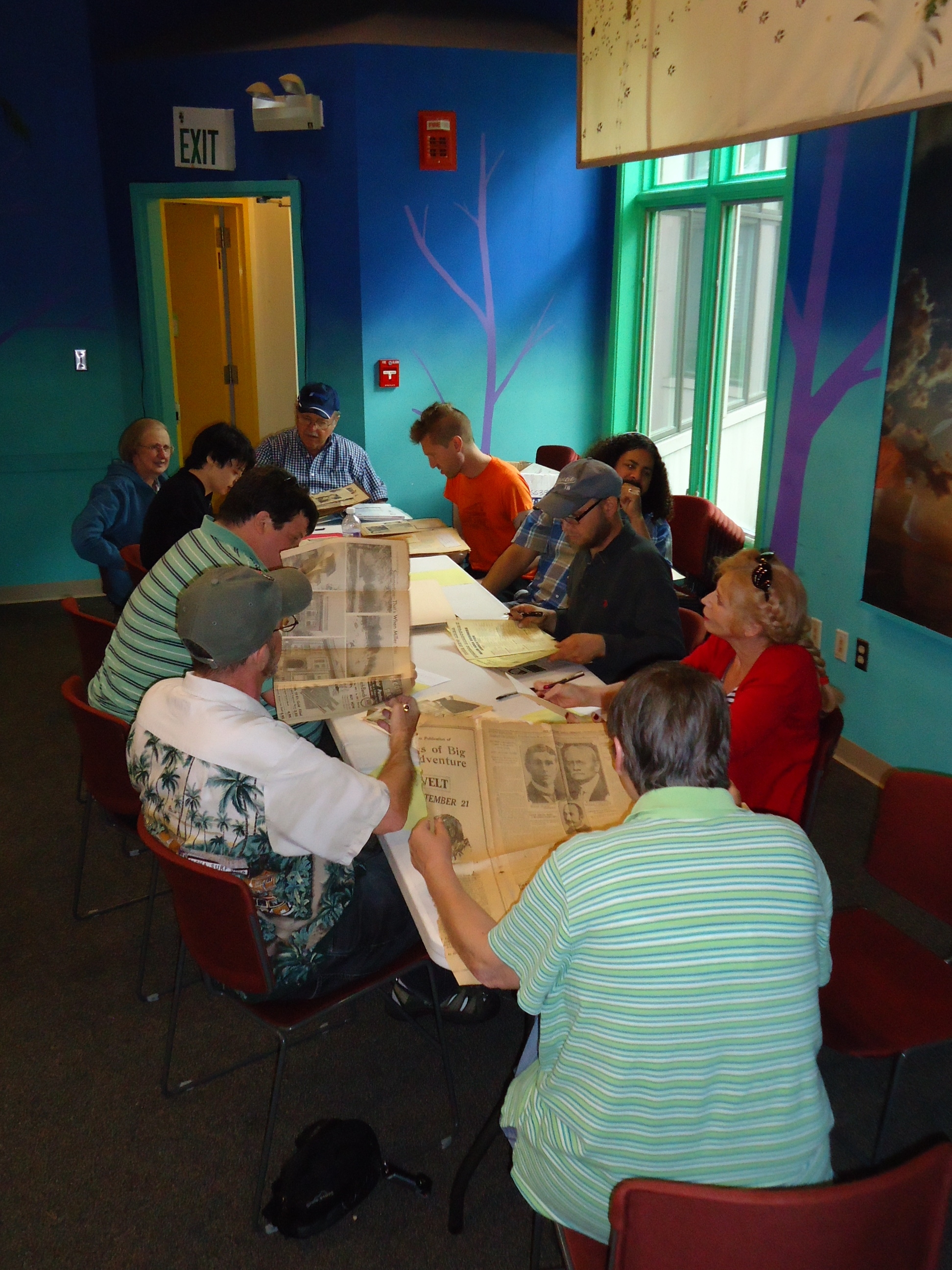About the Miller Historical Society

WELCOME!
Miller Historical Society (MHS) was founded on June 29, 2010. We are a completely volunteer, non-profit, community organization with the aim of preserving the rich heritage and fascinating history of the Miller Beach community. Miller Beach contains some of the most historically significant sites and oldest surviving structures within the entire city of Gary, Indiana. MHS members meet monthly, not only to celebrate the history of Miller Beach, but also to discuss wider historical subjects. Throughout the year, MHS hosts various programs, lectures and films exploring the history of the Calumet Region, Indiana History, U.S. History and World History.
Miller Historical Society is volunteer, nonprofit community organization established to promote an appreciation of the history of the Miller - Aetna area, now commonly known as the Miller Beach community of Gary, Indiana.
You are invited to the next MHS meeting!
When: The last Saturday of the month from 3-4pm
Where: Paul H. Douglas Center for Environmental Education-
100 N Lake Street in Miller Beach
Historic Preservation
A Brief History of Miller Beach
The Miller Beach community has a rich, fascinating and unique history that deserves to be protected, preserved and celebrated. This history goes back thousands of years with the Pottawatomie, Miami, and other native peoples who once called this area home. However, recorded history in Miller dates from the 1600's as french fur trapers began to settle the area and trade with the Native Americans. In 1675, French missionary Father Jacques Marquette passed through Miller Beach while traveling along the south shore of Lake Michigan in 1675. Between the late 1670's and the 1860s, Miller Beach was a sparsely inhabited wilderness, home to Natives Americans, French fur trappers, intrepid fishermen and a few runaway slaves.
Swedes began to migrate to the United States in large numbers in the 1860s and a few settled in Miller. The Swedes of early Miller drew their livelihood from sand mining, ice harvesting, and railroad maintenance. They built a thriving community and established Bethel Lutheran Church. In 1871, after the Great Chicago Fire, a group of Swedish immigrants fleeing the destruction in Chicago decided to join the Swedish community at Miller Beach. In 1894 the growing Swedish community built a larger church which still stands on Lake Street in Downtown Miller. Today, Old Bethel Lutheran is the oldest surviving church building in the entire city of Gary.
In 1896, the Father of Aviation, Octave Chanute conducted glider flights in Miller Beach which lead directly to the Wright Brother's historic flights.
The 20th century was a time of rapid change for Miller Beach. With the establishment of the huge US Steel plant directly to the west, a miraculously growing and prosperous new city was taking shape right next door. Steel workers looking for an escape from the summer heat in Gary, soon discovered Miller Beach. The sleepy town of Miller, Indiana quickly became a recreation and tourist Mecca. Realizing the potential of the lakefront, the city of Gary moved to annex Miller in 1918.
After annexation, a building boom began in the 1920s. Many of the homes and commercial structures in downtown Miller date from this period. As new residents moved in, Miller's demographic makeup, which was previously almost entirely working class Swedes became wealthier and more diverse. Beginning in the late 1940s, Miller experienced another building boom. This new housing on the northeast side of town attracted affluent residents and by 1950, Miller supplanted the Horace Mann neighborhood as Gary's wealthiest area, a distinction it has retained ever since.
Miller saw a strong, 70% growth in the 1950s. During this period, the population of Miller Beach became heavily Jewish. Gary's west side had always had a sizable Jewish population, but following larger, nation-wide trends, many Jews were relocating to the suburbs. A large portion of Gary's reform Jewish community moved to Miller Beach. In 1958, Temple Israel, which was originally located on Gary's west side also relocated to Miller Beach. In 2010, the congregation celebrated its 100th birthday. Today, Temple Israel is the only remaining synagogue in the entire city.
The 1960s were a time of demographic, racial and political changes for the city of Gary. Gary's black population was increasing while Gary's whites, like their counterparts in urban areas across the country, were steadily leaving for the suburbs. Unlike many other Gary neighborhoods that saw abrupt white flight and economic disinvestment during this period, Miller Beach underwent a stable and relatively peaceful transition. The first black family since pioneer times moved to Miller Beach in 1964. Throughout the 1960's, most of the new African-American residents relocating to Miller were "upwardly mobile" black professionals from Gary in search of better housing and schools.
Through the 1970s and 1980s, Miller Beach transformed from an affluent, whites-only enclave to an socioeconomically and racially integrated population. Today, the few remaining descendents of Miller's native people and early Swedish pioneers now live side by side with their African American, Jewish, Polish, Lithuanian, Greek and Hispanic neighbors. Miller Beach is truly an island of integration, a melange of various ethnic groups living together and proud to call themselves Millerites!
As you can see, the Miller Beach community has a wonderful and vibrant history. This history is an important part of the heritage and legacy of the City of Gary, The Calumet Region, the State of Indiana and the United States of America. A history this rich should be preserved for future generations. This is the main goal of the Miller Historical Society!
No community organization can be successful with out the support of dedicated members of the community. Miller Historical Society invites you to join us as we endeavor to bring our vision to realization. We at “The Society” are working together with local Miller citizens and community groups such as the Miller Citizens Corporation, Miller Business Association, The Miller Beach Arts and Creative District and the City of Gary to celebrate our history and achieve goals that benefit our community. Won't you join us?
Posts and Events
Categories:
MHS Digital Archive

Oral History
The Oral History initiative aims to interview Miller residents about life in Miller Beach. Below are two videos of Millerites discussing their time in Miller's schools.
Membership
Miller Historical Society meets from 3:00 to 4:00pm on the last Saturday of each month at the Indiana Dunes National Lakeshore's beautiful Paul H. Douglas Center for Environmental Education - 100 N Lake Street in Miller Beach. Meetings are free and open to the public.
If you would like to become a member of Miller Historical Society, our annual membership dues are only $15. A Lifetime MHS Membership is $150. Remember, MHS is a completely volunteer, non-profit organization. Your support goes directly to our efforts to preserve, protect and promote the history of Miller Beach.

Membership dues and/or donations can be sent to:
Miller Historical Society
264 N. Lake Street
Miller Beach
Gary, Indiana 46403